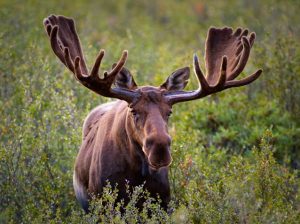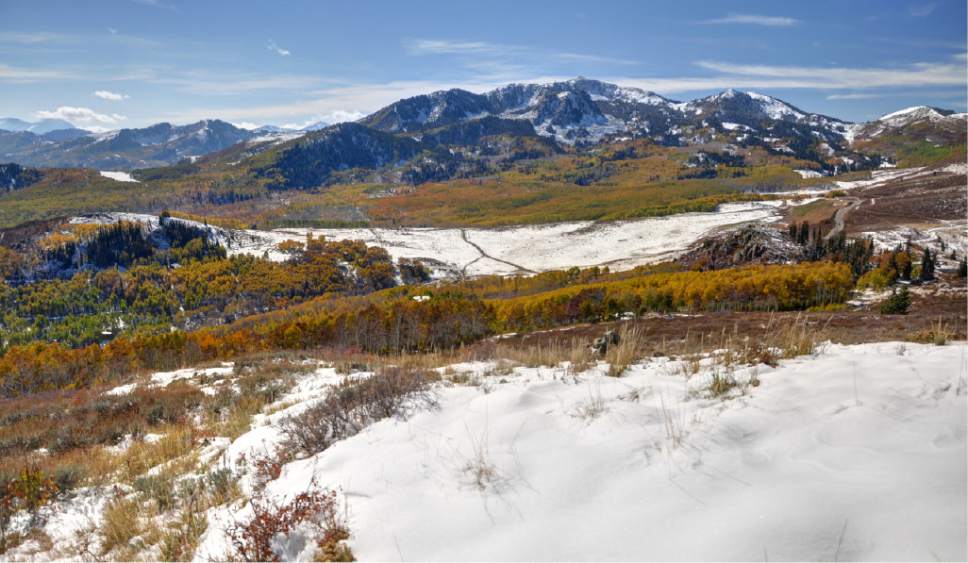Before murdering millions during the Holocaust, the Nazis referred to Jews as rats. After murdering 17 people and lobotomizing some of his victims in an attempt to preserve them, alive but in a catatonic state, serial killer Jeffrey Dahmer explained, “…I tried to create living zombies…I just wanted to have the person under my complete control, not having to consider their wishes, being able to keep them there as long as I wanted.” In vivisection labs, scientists commonly cut animals’ vocal cords, so the scientists don’t have to listen to the animals scream.
These examples illustrate a common psychological phenomenon: In order to commit atrocities, humans characterize their victims as sub-human, objectify and silence them. It is, after all, much easier to destroy the less than human and the voiceless.
Civilized humans are currently destroying the natural world. Water continues to be polluted, air is poisoned, soil is lost faster than it can be replaced, and the collapse of every major biosphere across the planet intensifies. This destruction is made possible through the objectification and silencing of the natural world. The American legal system defines nature as property. Capitalism calls nonhumans “natural resources” and only values them as profits. The Abrahamic religions remove the sacred from the natural world and give it to an abstract, patriarchal God who somehow exists beyond the natural world.
It’s no wonder, then, that many in Park City participate in the silencing of nature, too. Many Parkites, for example, celebrate the existence of thousands of acres of land designated as “protected open space.”
There are several problems with this. First, the term “open space” is dishonest and works to objectify nonhumans while silencing the natural world. Objectification and silencing pave the way for exploitation. Second, as long as runaway climate change threatens snowfall, creates droughts, and contributes to wildfire intensity, no natural community in Park City can truly be considered “protected.” To call endangered natural communities protected leads to complacency, and we cannot afford complacency while the world burns.
The “Save Bonanza Flats” Campaign, which raised $38 million to protect 1,350 acres of high-altitude land from development, was a beautiful expression of the community’s love for life. Do not mistake me, I am deeply glad that Bonanza Flat is safe from hotels and multi-million dollar homes. But, Bonanza Flat is not safe, and will never be safe, as long as the dominant culture’s insatiable appetite for destruction is ensured by humans who believe the natural world is nothing more than lifeless matter for humans to use.
***
While working on this essay, I decided to head up Guardsman Pass to ask those who live in Bonanza Flat what they think about “protected open space.” Hiking is contemplative for me. I was asking myself just how, exactly, I thought the nonhumans in Bonanza Flat would express their feelings about being “open space” when I rounded a bend to find myself face to face with a bull and cow moose grazing among the aspen.
The aspen were mature, many of them boasting trunks eighteen and twenty-four inches in diameter. They grew closely together, creating an ancient silvan atmosphere with dappling silvers, golds, and greens. The afternoon sunshine mixed with aspen leaves to give me the slight, pleasant sense of existential vertigo that accompanies the timelessness of life’s original joys.
I met the bull moose’s gaze. My bones recognized their nearness to a greater collection of their kindred. My muscles, observing the moose’s, remembered their first purpose and tingled with excitement. His eyes, browns in brown, reflected all the different woods he’d ever strode through. I’m not sure how long we considered each other, but when he finally looked away, his wisdom was undeniable.
And, I had my first answer: To share an aspen grove with a bull moose in Bonanza Flat, is to know this space is anything but open.

I continued on to find a stone to sit on and watched the lazy orange flutter of butterfly wings. I listened to the soft hum of bees, the breeze through quaking aspen leaves, and the hypnotic click of grasshoppers in flight. I saw mule deer bounding over a fence, a red-tailed hawk riding wind pockets, and squirrels tossing pine cones to the ground, narrowly missing human heads (for the squirrels’ winter caches). All these beings confirmed the lesson the bull moose taught me. Bonanza Flat is not open, it is filled with countless living beings.
An approaching rain cloud brought tidings of the radical interconnectedness of all life and proved that Bonanza Flat is not truly protected. When the cloud arrived to give its water, the rain evaporated well before it reached us. I was reminded that Bonanza Flat, like all communities along the Wasatch Range, depend on snowpack for life-giving water. Simple arithmetic tells us that as long as total snowpack diminishes decade after decade, as it has been since the 1950s, sooner or later there won’t be enough water left.
While Bonanza Flat is safe from the developers’ bulldozers and chainsaws, many threats, just as deadly, still exist. Marssonina fungus spores, aided by climate change, could spread over aspen leaves until they no longer quake. Shorter winters allow the tiny pricks of too many tick bites to suck moose lives away. The worrisome scent of wildfire smoke haunts the wind. And, the asthmatic cough of children brought to the mountains by their parents to escape the Salt Lake Valley’s terrible air quality ring across Bonanza Flat’s trails.
***
Not all humans have objectified and silenced the natural world. For the vast majority of human history, humans lived in balance with the natural world we depend on. We lived in this way, in part, because we developed cultures that taught the sacredness of the natural world.
I’m writing this from the eastern edge of the Great Basin where the Western Shoshone, Paiute, Goshute, Washo and others lived sustainably for millennia. Much of my work in the region has been to protect pinyon-juniper forests from government-sponsored clearcuts. The forests make poor livestock grazing and ranchers make more money when the forests are replaced with grasses, so the forests are demonized. And, just like the demonization of Jews led to the Holocaust, the demonization of pinyon-juniper forests leads to millions of acres of clear-cuts.
Food from pinyon pine nuts and medicine from juniper trees were staples in many of the Great Basin’s traditional cultures. Pine nuts and juniper berries can be harvested without damaging the forests, so native peoples lived on what the land freely gave. In my research, I stumbled upon the transcript of a presentation[1] Glenn E. Wasson, a Western Shoshone man, gave at a pinyon-juniper conference hosted by the University of Nevada-Reno, the United States Forest Service, and the Bureau of Land Management. His words describe his people’s spirituality and represent a healthy relationship with the natural world.
Wasson said, “Each living entity constitutes a link in the chain of life. All those seen and unseen, all who grow from the ground, all those who crawl, all those who swim, all those who walk on legs, all those who fly, are all intertwined in the chain of life. Each plays a vital role in the keeping of a strong, healthy, and living Mother Earth, who provides each and every entity with all the necessities for life.” Contrast Wasson’s worldview with the dominant culture’s conception of nature as property, as resources, as objects and we begin to see why we’re in the mess we’re in.
While criticizing the Forest Service and BLM’s treatment of pinyon-juniper forests, Wasson described the mindset all of us must embrace. He said “…the cutting down of a single living tree is sacrilegious – the cutting down of a forest – UNTHINKABLE!” Until we begin to see individual nonhumans as sacred and natural communities worthy of our utmost respect, the destruction will continue.
Simply changing our language will not stop the destruction and I am not criticizing anyone’s efforts to protect Bonanza Flat from development. We need much more than better words and any land that stands free of development today, has a chance to stand free of development tomorrow. Land developed today may take decades to recover.
It’s not just Bonanza Flat. Park City boasts 8,000 acres of so-called protected open space. These are not protected open spaces. These are living natural communities where countless nonhumans live with lives as valuable to them as yours is to you. And, their lives are under attack.
I’m not writing anything you don’t already know. Most people in Park City are concerned about the natural world. Unfortunately, it appears that most Parkites are more interested in using the natural world, than in saving it. Why do I say this? Well, ask yourself, do most people in Park City spend more time confronting the forces destroying snow, or more time skiing on it? Do most people spend more time working to protect threatened Canada lynx, or more time mountain biking through Canada lynx’ homes? Do most people spend more time trying to save Colorado Pikeminnows, or more time flying fishing the waters Colorado Pikeminnows swim through?
There’s nothing wrong with enjoying the natural world. But, nonhumans do not exist for human enjoyment, they exist for themselves. It is only through centuries of cultural conditioning, teaching us to see the natural world as full of objects for our use, that some humans find nothing wrong with spending more time riding bikes than fighting for our nonhuman kin.
Life is created by complex collections of relationships formed by living creatures in natural communities. Water, air, soil, climate, and the food we eat depend on natural communities. The needs of these communities are primary; morality, the efforts of our daily lives, and our cultural teachings must emerge from a humble relationship with these natural communities. True sustainability is impossible without this.
Not long ago, all humans lived in humble relationships with natural communities. We developed traditional cultures that were rooted in the connectedness of all living beings. These cultures insisted upon the inherent worth of the natural communities who gave us life. Members of these cultures did not know “open spaces,” they knew places filled with those who grow from the ground, those who crawl, those who swim, those who walk on legs, and those who fly.
The dominance of a culture that objectifies and silences nature and calls natural communities “open space” enables its destruction. This culture has pushed the planet to the verge of total collapse. To avert collapse, the destruction must stop. We must create cultures where the exploitation of individual nonhumans is sacrilegious, and wholesale environmental destruction is unthinkable. We must stand in solidarity with all those – human and nonhuman – who share this living community we call Park City.
[1]Wassen, G.E. 1987. The American Indian response to the pinyon-juniper conference. In: Everett, R.L., comp. Proceedings: Pinyon-juniper conference. Gen. Tech. Rep. INT-GTR-215. Ogden, UT: U.S. Department of Agriculture, Forest Service, Intermountain Research Station: 38-41.
